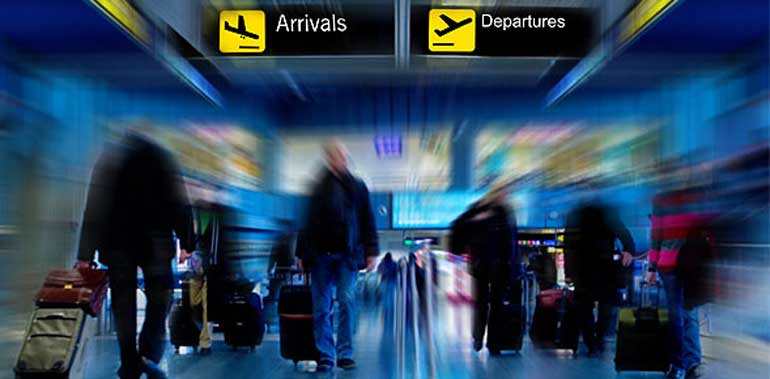Monday Dec 08, 2025
Monday Dec 08, 2025
Monday, 24 August 2015 00:00 - - {{hitsCtrl.values.hits}}

IATA’s global passenger traffic results (revenue passenger kilometres or RPKs) for June 2015 shows a 5.7% increase in demand compared to June 2014.
This is a slowdown compared to the 6.9% year-on-year growth recorded in May 2015, in part owing to the timing of Ramadan, which depressed travel demand in the Middle East. June capacity (available seat kilometres or ASKs) climbed 6.0%, and load factor dipped 0.2 percentage points to 81.1%.
“June was another healthy month for demand for air connectivity, although slower trade activity in emerging Asia Pacific markets and the impact of the Greek debt crisis on European travel remain worrisome,” said IATA Director General and CEO Tony Tyler.
June international passenger demand rose 5.3% compared to June 2014. Airlines in all regions except Africa recorded growth although there was wide variation between regions. Capacity climbed 6.0% pushing down load factor 0.5 percentage points to 80.4%.
Asia Pacific airlines’ June traffic rose 6.8% compared to the year-ago period, which was down from a 9.3% rise recorded in May. Capacity climbed 5.8% and load factor increased 0.7 percentage points to 78.1%. Latest data show that trade activity to/from Emerging Asia is down 8% compared to the end of 2014, while China’s manufacturing sector has been struggling in recent months, accompanied by weakness in export orders, according to the financial data firm Markit.
European carriers saw demand climb 4.1% in June versus June 2014, which was below the 5.7% rise in traffic in May. Although business activity indicators suggest that the region’s economic recovery is on track, consumer sentiment has been hampered by events in Greece including the potential consequences of the country exiting the Eurozone. Capacity rose 3.5% and load factor climbed 0.4 percentage points to 84.0%.
North American airlines experienced a 2.7% increase in traffic, which was above the 2% increase recorded in May. Capacity rose 2.8% and load factor slipped 0.1 percentage points to 84.9%, which still was the highest among the regions. While it is expected that the US had better economic performance in the second quarter than the first quarter, the strengthening dollar is likely to continue to put pressure on international leisure travel to the US.
Middle East carriers’ June demand climbed 10.5% but this was eclipsed by a 19.5% jump in capacity that caused load factor to plunge 5.7 percentage points to 74.3%. Although June traffic growth was slower than in May (14%), this was partly owing to the timing of Ramadan, which started in June this year but occurred mostly in July in 2014. The holy month tends to subdue demand for air travel.
Latin American airlines had a 5.9% rise in traffic compared to June 2014. Capacity rose 5.8%, causing load factor to edge up 0.1 percentage points to 79.6%. Regional trade volumes showed strong improvement during the first half of 2015, providing a boost to business-related international travel despite weakness in Brazil and Argentina.
Thai Lion Boeing 737-900ER registration HS-LTR at Don Mueang Airport in Bangkok, Thailand
African airlines’ traffic fell 2.0% in June year-to-year, due to negative economic developments in parts of the continent including Nigeria, which relies heavily on oil revenues. Capacity slipped 1.7% and load factor dipped 0.2 percentage points to 67.1%.
According to ACI, airports in the Asia Pacific and the Middle East maintained steady growth in June 2015, reporting year-on-year gains at +4.9% and +6.1% respectively.
Despite slowdown in regional trade activities, international travel remained resilient. For the first half of 2015, both regions recorded cumulative passenger traffic increase of +8.3% and +8.8% respectively.
A number of major airports in the Asia Pacific generated year-on-year growth in excess of 15% in 1H 2015: Shanghai Pudong (PVG) +18.5%, Bangkok (BKK) +18.5%, Mumbai (BOM) +17.8%, and Kunming (KMG) +20.2%.
Bangkok Don Mueang (DMK) continued to generate the highest increase among major airports at +50.3%.
Air freight however, continued to be impacted by slowdown across Asian export markets.
In June 2015, Asia Pacific recorded a decrease of -0.2% and the Middle East maintained growth at +4.5% from the same period last year.
From January to June this year, Asia Pacific generated cumulative growth of +3% with New Delhi (DEL) achieving the highest growth rate at +12.2%. The Middle East grew at +8.6% year-to-date, and its largest freight hub Dubai (DXB) recorded increase of +2.8%.
Looking ahead towards the second half of 2015, passenger traffic is likely to maintain a solid track with support from leisure travels. However, the slowing down in trade activities continues to put pressures on both passenger and freight traffic in the coming months.